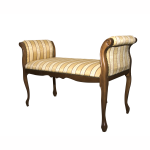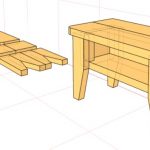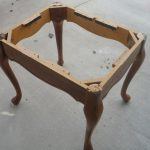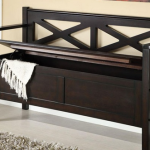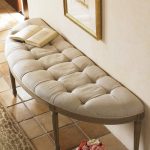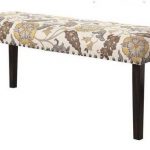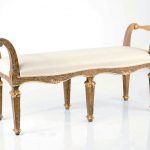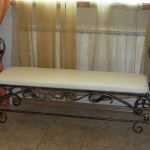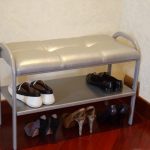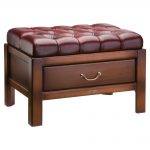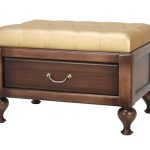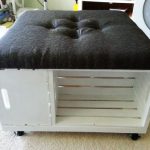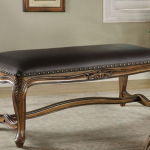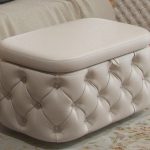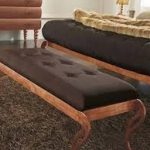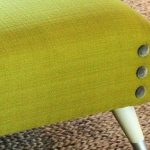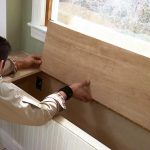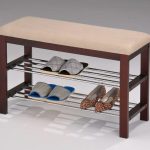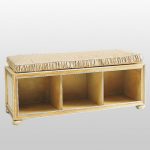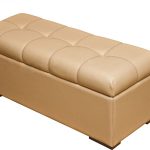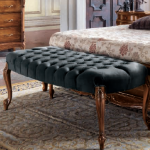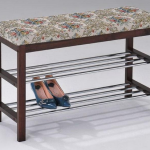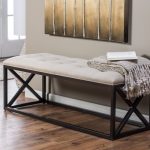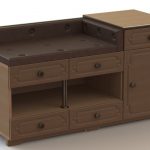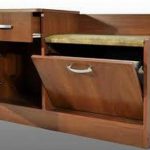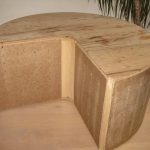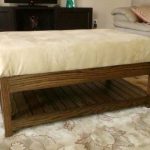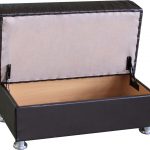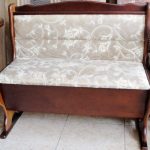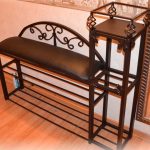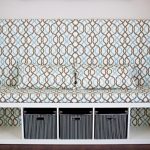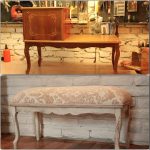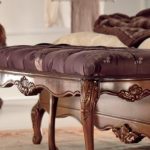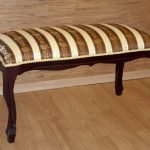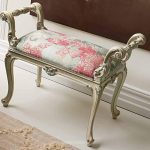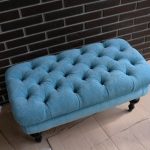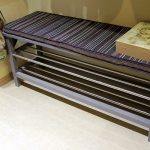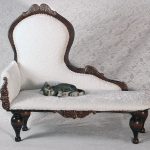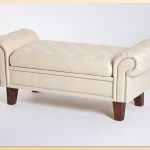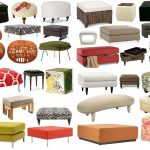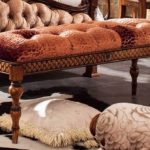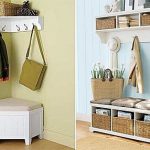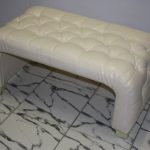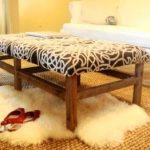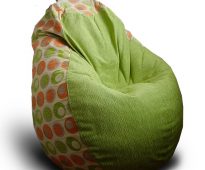 How to make an ottoman bag with your own hands?
How to make an ottoman bag with your own hands?
We do a banquette with our own hands
Bench can be called popular type of furniture for the hallway. Over time, its design has not undergone major changes. This is not only a comfortable pouf, where you can accommodate guests, but also a stylish piece of interior, it will look great in the hallway, kitchen, bedroom and living room.
The stores have a huge selection of these soft poufs: with lockers, shelves, drawers. Each manufacturer draws up the bench at its discretion. But what to do if you still haven't found a suitable variant for your interior? In this case, the question may arise: how to make a bench with your own hands?
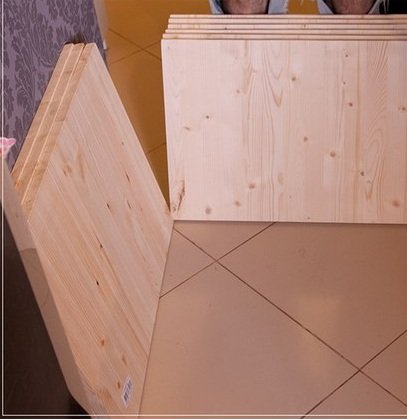
The basic device of the stool is quite simple - a stool with a soft seat.
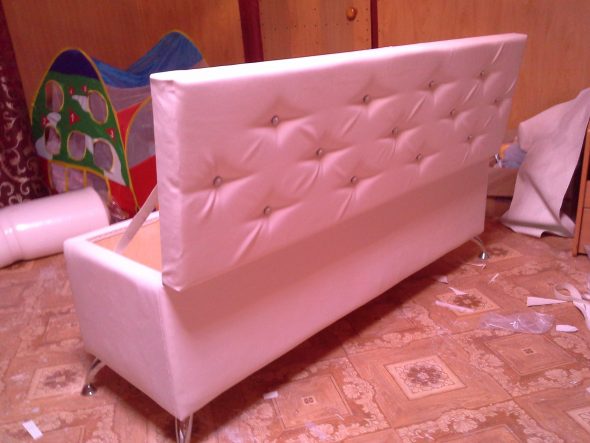
The fabric is folded in around the edges and secured with staples.
Content
The advantages of the hand-made banquettes
The bench can be made by anyone who possesses the minimum skills of carpentry work and is fluent in a needle
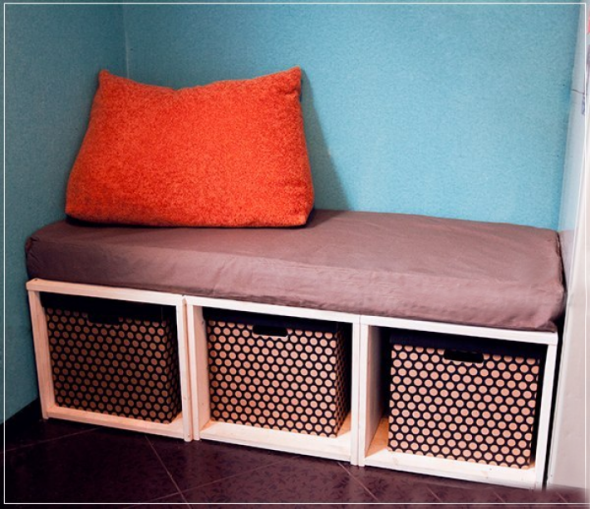
Often the basis of the product really is a stool.
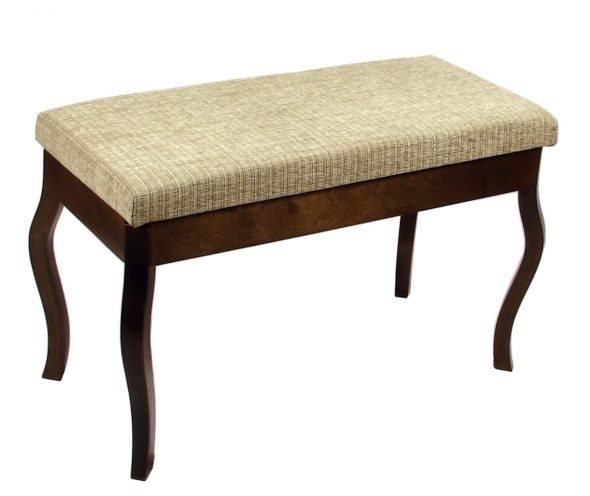
This product looks very decorative, and make it quite simple.
Consider the advantages of homemade pouf.
- First, you can independently choose the shape, color, size to your liking. It all depends on your imagination. Then you can create a bench, unlike other factory-made counterparts, which will add originality to your interior.
- Secondly, a self-made pouf will cost you much less than a ready-made store.
- Thirdly, you can make a stool of old furniture that you were about to throw out (stool, coffee table), but in this way give her a new life.
- Fourth, the creation of something useful and beautiful always brings moral satisfaction to the creator. Having done such a thing on your own, you will be able to present your works to the guests and receive many compliments as a reward for your work.
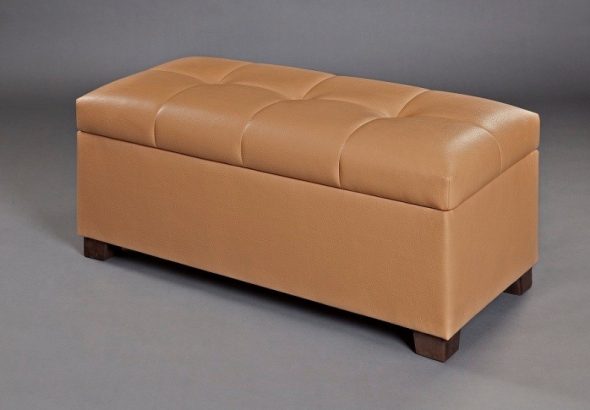
Larger bench, if you allow the size of the hallway, to make no less simple.
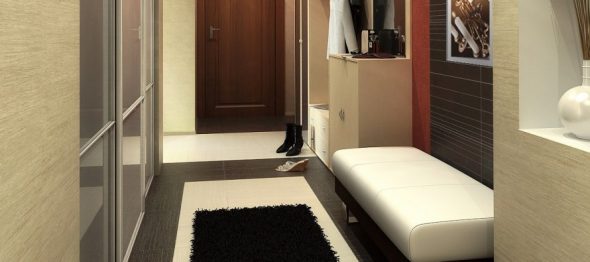
From the selected fabric cut out a fragment of the desired size with an allowance.
Before you begin, you need to consider the design of the product and see what types are. The bench can be selected by shape, material and size.
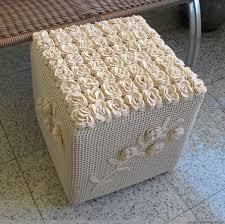
This will require minimal skills in joinery and the ability to hold a needle and thread.
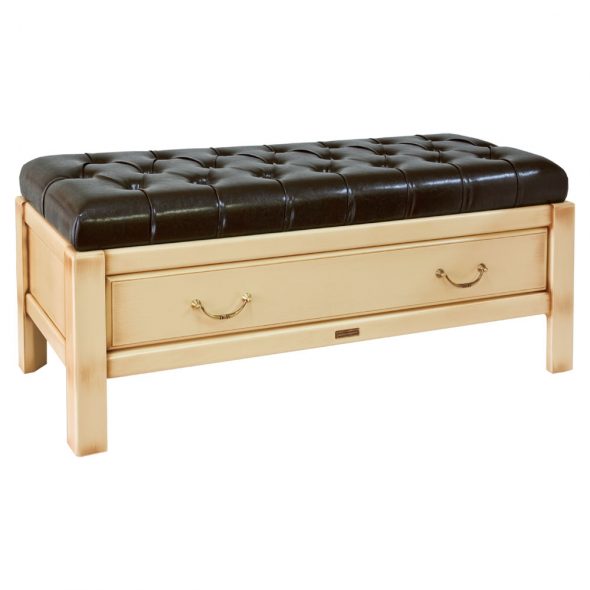
It is recommended to first lay the burlap and similar coarse material on the bottom, and then fix the foam rubber on the glue or with a stapler.
Consider the basic types.
- Forged.
More suitable for the interior in the Baroque or Empire style. The product will have forged, twisted bases. Most often, these instances do not have built-in shelves, drawers and cabinets. Performed in this style, the pouf will look best in the hallway.
- From the tree.
These types of products are often very functional: with built-in drawers and lockers. Will look great in the hallway, kitchen or living room.
- With back.
This little sofa will immediately create an atmosphere of comfort, especially if it is decorated with soft pillows, made in the same style. This is the most comfortable and convenient option.
- Folding.
This type is more functional: it can quickly understand. All elements are fixed to the bolts.Therefore, for quick disassembly of the product, the design will be ordinary and not bearing decorative functions.
- With drawers.
Very useful copy for the hallway, which will save space.
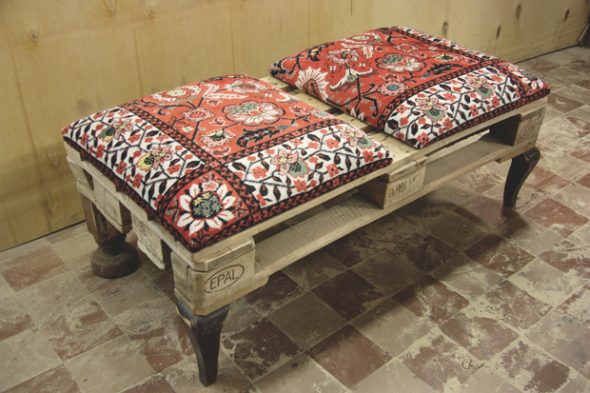
"Raw materials" for the product are wood materials.
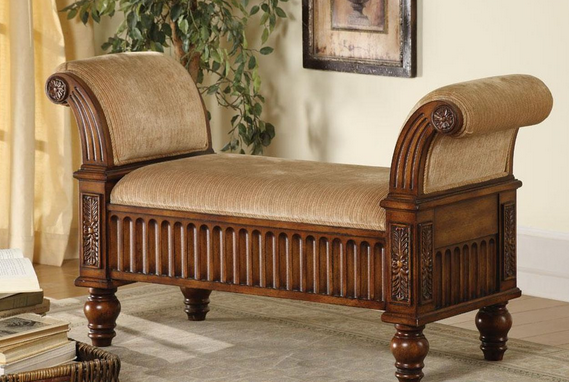
For soft seats cut out a piece of foam of the desired size.
To make a bench, you must also familiarize yourself with the types of upholstery that can be used when working.
- The cloth.
The bench can be covered with silk, cotton, linen fabric. Textile puffs are unpretentious in the care. A variety of shades is an advantage of such upholstery.
- Leather.
This material is not suitable for every interior, but it will look very expensive and elegant. Among the shortcomings can be identified high price, complex care.
- Artificial leather.
This option is cheaper compared to the previous one. It will look as noble as a puff made of genuine leather. At the same time in the care of leather leatherette is not capricious. Although his service life is significantly less than that of a natural “fellow”.
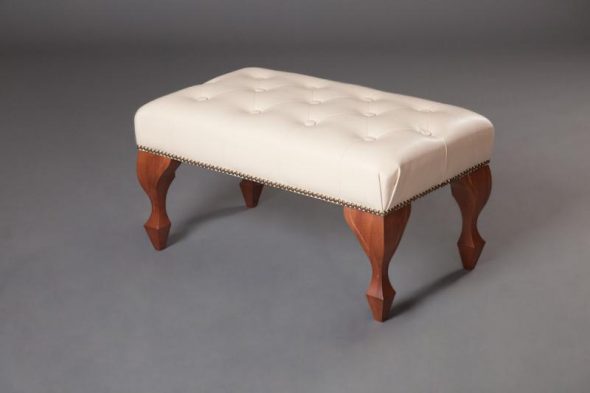
Forged models or furniture with an iron frame will require much more serious skills and experience.
It is easiest to make a bench of old furniture or wood, since forged models and those with an iron frame will require more serious skills and experience from the master.

As a rule, foam rubber acts as a filling material - it is quite elastic and holds its shape for a long time.
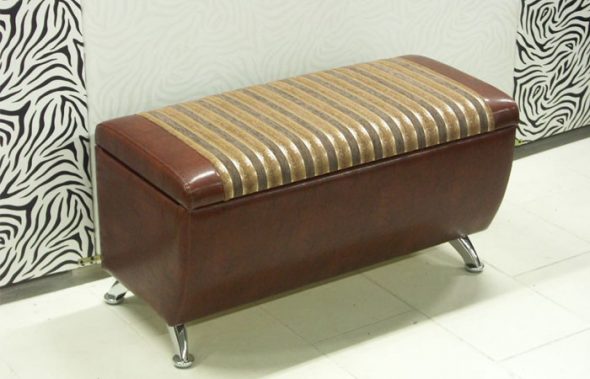
An attractive look to the legs will provide a manual cutter.
Necessary materials
To work you need to have the following materials.
- For a padded stool with legs you will need a wooden bar - 30 * 40, 30 * 50 mm. or, if available, you can use the old twisted legs from a stool, table or bench.
- Plywood.
- Fastening materials: staples, screws.
- Varnish, stain or paint.
- High foam rubber.
- Fabric or skin for a covering.
- Fabric for finishing the invisible side of the seat.
- Buttons.
- Cover fabric (if required).
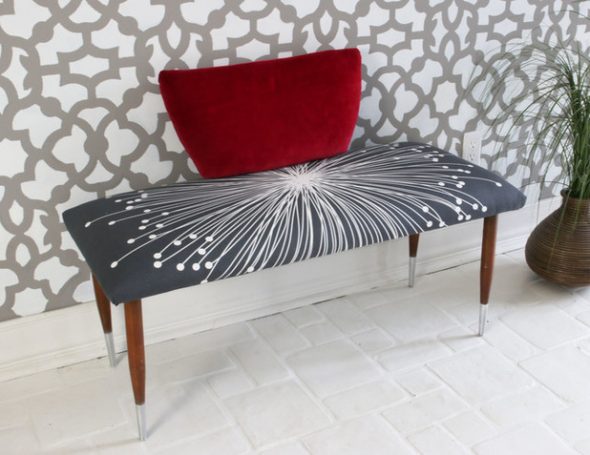
If a very soft seat is being constructed, especially with a four-sided tie, then in addition to foam rubber, a synthetic winterizer is also used.
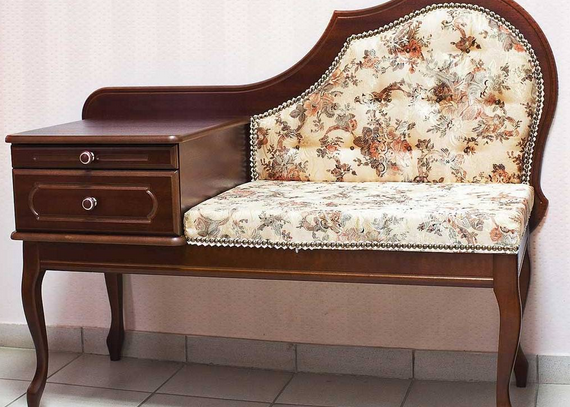
If a model with legs is realized, then 4 wooden planks are attached to the bottom so that they protrude beyond the edges by 1–2 cm.
Required Tools
To work you must have the following tools:
- drill, screwdriver;
- screwdrivers;
- hammer;
- construction stapler;
- sandpaper of different hardness;
- manual mill (if the base of the pouf is from a bar);
- level;
- thick threads and a large needle;
- scissors;
- roulette;
- a piece of chalk;
- sewing machine (if you need to sew a cover).
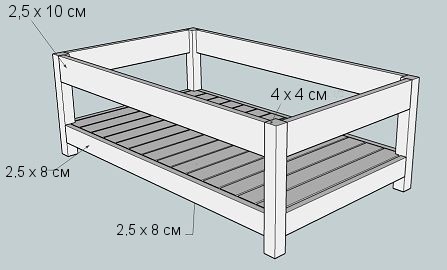
In addition, you may need paint or stain and varnish.
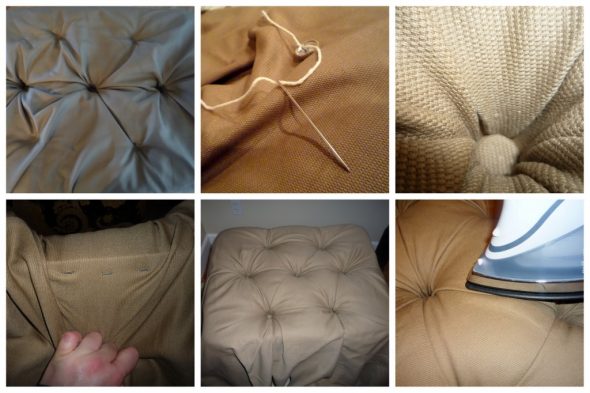
The seat is first cut out - its dimensions serve as a starting point, and all other details are adjusted to the seat if necessary.
If you do not have enough experience in the manufacture of furniture, then the whole process is better divided into several days, so that every detail has been given due attention.
Step 1: Finishing the Feet
If you have ready-made twisted legs, they must be restored. Emery paper we clean the surface. Then we apply a new paint or varnish and stain. It is better to apply in two layers.
If you do not have ready-made legs, they must be made from a bar. They will be attached to the seat with screws and corners. If possible, it is better to process the timber using a manual cutter. Such a tool can make non-standard protrusions, and the product will turn out more interesting. The cant is also covered with stain or paint.
Step 2: Plywood and Foam
It is necessary to cut the foam of the right size around the plywood. At the same time, he should perform 2-3 cm on each side. We select the sizes individually.
Step 3: Mark up the plywood
We glue the foam rubber to the plywood, placing the glue closer to the edges. With the help of roulette and chalk, we draw the markup, on which we will further sew buttons. We make several holes in plywood at the same distance. Foam rubber while trying not to hurt.
Step 4: Assemble the product, we sheathe it with a cloth or leather
Cut a square or rectangle of leather or fabric in the shape of the product. It is necessary to carefully calculate the dimensions of the upholstery and adjust them under the seat, leaving a margin of 2-3 cm on each side.
Next you need to carefully wrap the fabric and secure with a stapler.
You can install buttons. Using a needle, thread the thread through the button first and then out into the hole in the plywood under the seat. For better fixation, you can fasten the thread with staples.
It is necessary to close the rough finish on the back of the seat with a textile cloth. Sew the cut piece on the edge of the bottom.
If the legs were from another product, then choose their location, fasten with screws their bases and twist. The legs of the timber fastened with screws and corners to the seat.
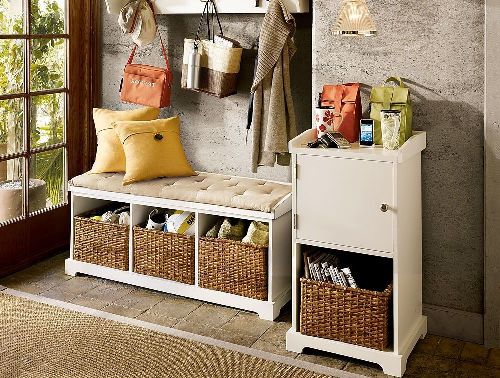
The process consists of several stages. All of them are fairly simple to implement and require only care and due care.
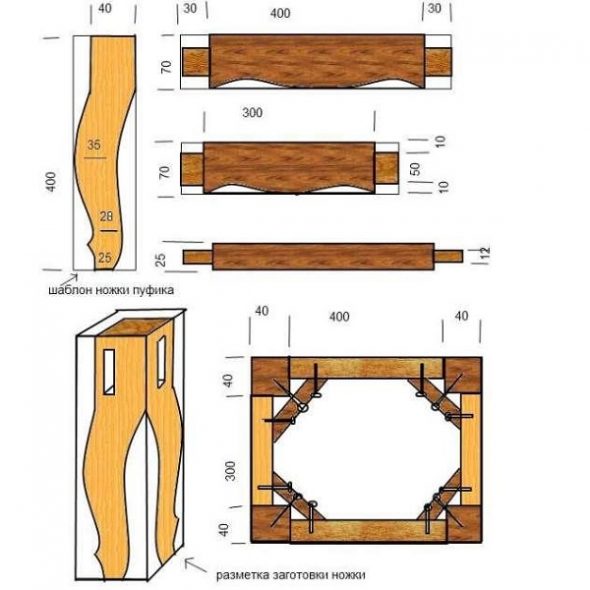
It is not recommended to make all the necessary parts at once, especially if the first experience in the production of furniture.
Dressing
Buttons are better for choosing upholstery color. The amount depends only on personal preference. You can diversify the stool with a decorative cover, which you can also sew yourself. Requires only the skill of working with a sewing machine.
If you do not have the skills of cutting, it is better to use a finished product pattern found on the Internet or to watch a master class on its independent production.

The capacity of the stool is calculated: one person occupies an area with an area of 45 * 55 cm.

Details cut out with an electric jigsaw, sanding the edges.
For the interior in the Empire or Baroque style you can make a four-sided tie. This model looks very interesting and presentable.
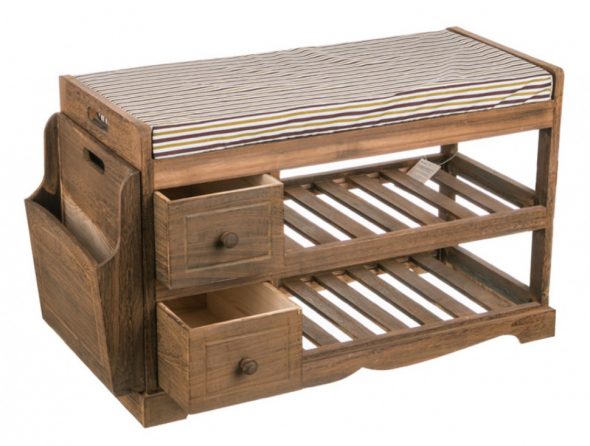
The parameters of the hallway and the maximum possible dimensions of the product are determined.
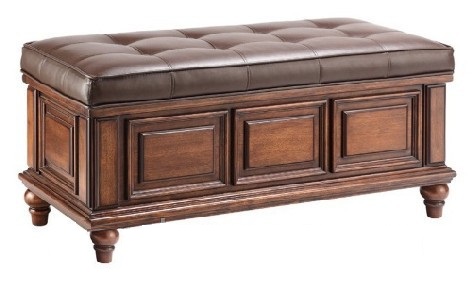
If there are a lot of details - partitions, shelves, back, it makes sense to make a piece, and then proceed to cutting the plywood board.
So you learned that it is quite possible to make a bench on your own with minimal carpentry skills. The main thing is not to hurry and pay due attention to each stage. Then the product will be neat and beautiful. This type of furniture will not only be useful in terms of comfort and space saving, but will also become a stylish and original addition to the interior.
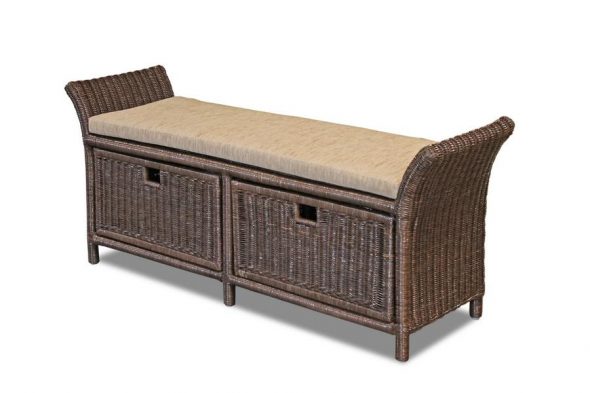
Choose a model: with a back - quite difficult to implement with a minimum of experience, with shelves, drawers, legs or supported on the sidewalls and so on.
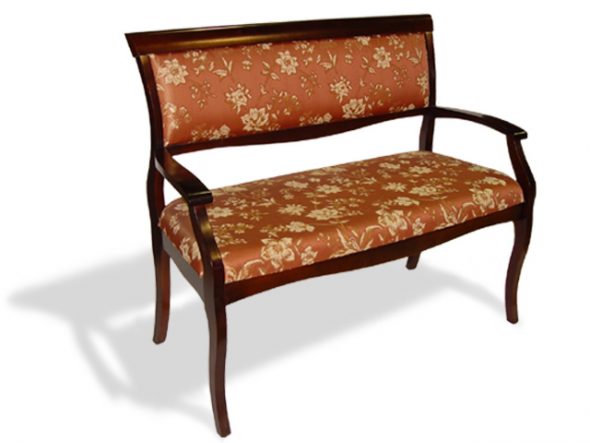
Based on the size of the seat determine the parameters of the other elements and draw a sketch.
VIDEO: Making stools at home
50 photo ideas how to make a DIY bench
 How to make an ottoman bag with your own hands?
How to make an ottoman bag with your own hands?
 How to make a cover on the chair with your own hands.
How to make a cover on the chair with your own hands.
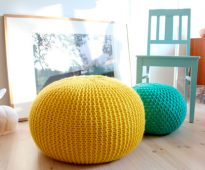 How to make an ottoman with your own hands
How to make an ottoman with your own hands
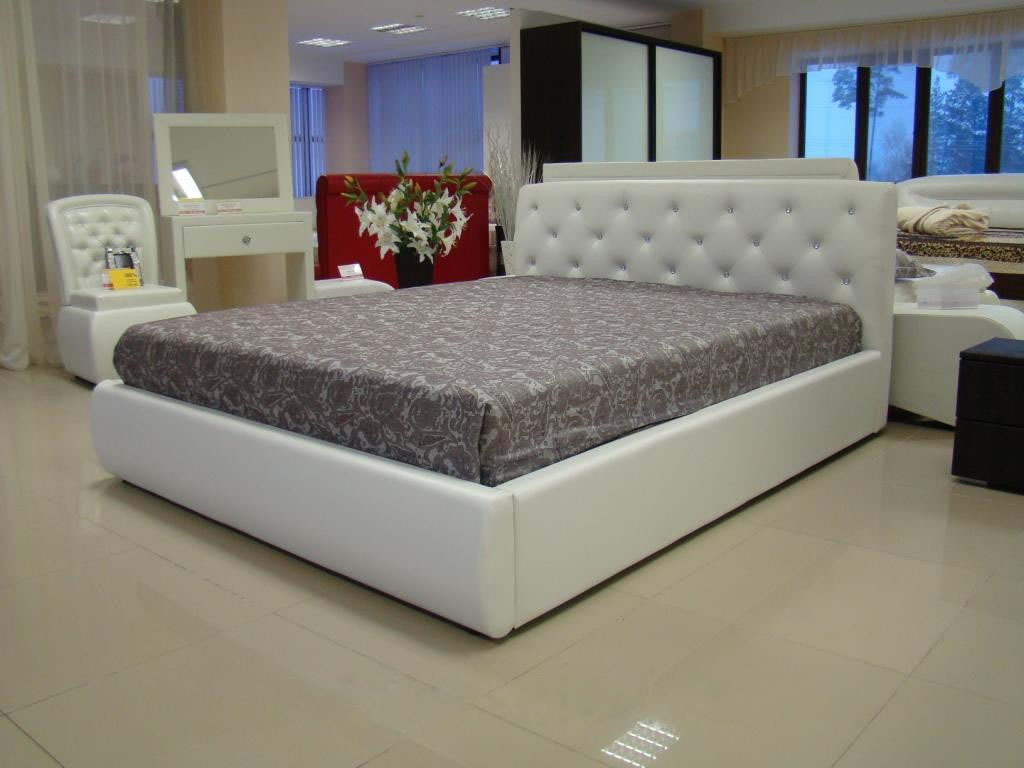 How to choose the bed-couch with a lifting mechanism.
How to choose the bed-couch with a lifting mechanism.
 We clean upholstered furniture at home.
We clean upholstered furniture at home.
 How to make a knitted pouf do it yourself: master class
How to make a knitted pouf do it yourself: master class
